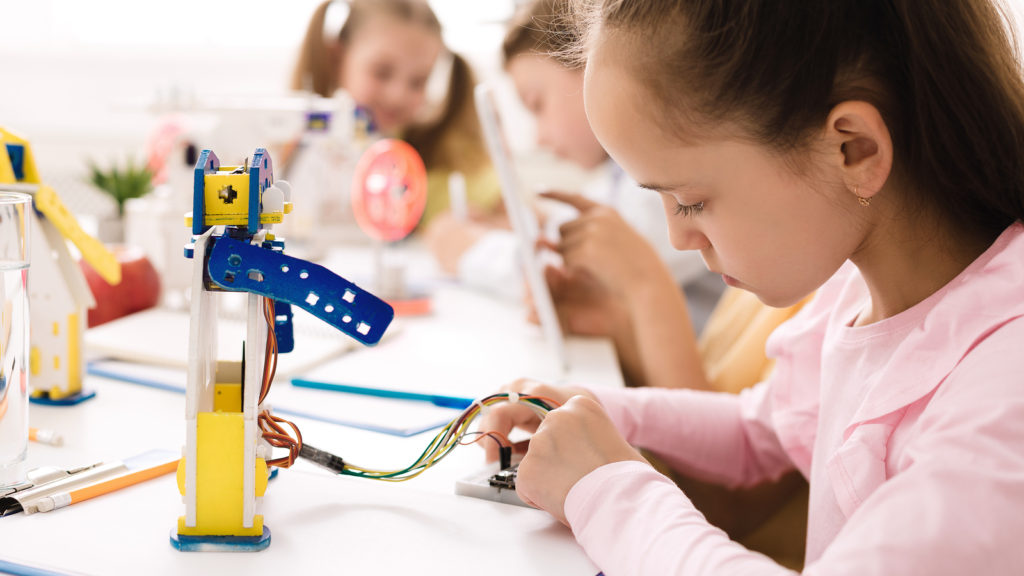The importance of STEM education for early elementary learners

The buzz around Science, Technology, Engineering, and Mathematics (STEM) in elementary education continues. Teachers on all levels, administrators and principals, education standards writers, and government agencies know that our country needs to produce students skilled in the STEM fields to fill jobs and continue our country’s tradition of innovation.
But understanding that STEM-proficient citizens are needed and growing said citizens are very different matters.
Colleges and universities have enjoyed success in recruiting more women and minorities to STEM fields. Middle school and high school teachers are working to try innovative new models and include more STEM education in their classrooms. Older elementary school students are participating in science fairs and maker fairs. But what about our early elementary school learners?

Traditionally, elementary school teachers have focused classroom time on literacy and mathematics. The push toward standardized test scores like the PARCC, Stanford, and other knowledge-based assessments has encouraged this laser focus, but it means that in many kindergarten, first grade, and second grade classrooms science and social sciences get short shrift. Innovative teachers have managed to find the time and justification for STEM-related activities, but many U.S. students reach fourth grade with few science and technology skills. It’s no wonder. Teachers must justify a certain amount of hours each week of literacy and mathematics instruction, and their planning time, too, is often dedicated to those subjects.
Lack of planning time and classroom time account for one reason that STEM skills, aside from math, have traditionally been developed primarily in secondary school and at the university level, but not in elementary schools. But evidence is coming to light that STEM skills built from early learning will help students to develop the knowledge and habits that will engender a lifetime of STEM understanding and proficiency.
One reason that it’s so important to encourage STEM learning early in elementary school is that the process of inquiry that is integral to STEM is the way young children naturally learn. Young children explore, ask questions, and discuss their findings. In her article on Early STEM Education, Erin MacPherson describes first grade learners gathered around a sand table:
“Students become engrossed with the sand, some marbles, and rulers, and soon, with the help of a few guiding questions, they are learning principles of physical science.”
Our kindergarten, first grade and second grade students have the gift for exploration and experimentation already. When those natural impulses are matched with fundamental science concepts and instruction in inquiry methods such as controls, communication, and record keeping, students gain a solid foundation in science that can help them move ahead and excel in STEM fields.

So how can K-2 teachers and teams manage to integrate STEM learning into their busy schedules and packed curriculum? Some recently developed educational products can help teachers build STEM proficiency in the primary grades while providing the supports teachers need to fit hands-on and interactive science instruction into their busy classroom schedules.
Science4Us is one such program. Innovative online-interactive activities and hands-on offline activities guide students’ exploration to build a solid foundation in STEM skills. Through online games and videos, students learn concepts and vocabulary that will support their learning in higher elementary grades. They participate in both online, virtual investigations and offline, hands-on investigations to slake their thirst for—and build skills in—scientific inquiry, investigation, and engineering. Activities are interdisciplinary, too, often including literacy skills, math skills, historical and biographical information, a connection to the arts, and even literature that relates to science.
Studies show that as students enter middle school, many of them, especially girls and minorities, lose confidence in their abilities to learn Science, Technology, Engineering, and Mathematics. But it doesn’t have to be that way. When we provide a STEM education that meets classroom budget and time challenges and also gets kindergarten, first grade, and second grade students excited about science, we’re building foundation of knowledge and a love of STEM that can be fostered and built upon for all students through years of education. That foundation will help every student, without concern of gender or background, remain confident in their STEM learning. It is changes like these that can change the face of STEM education in early elementary classrooms.